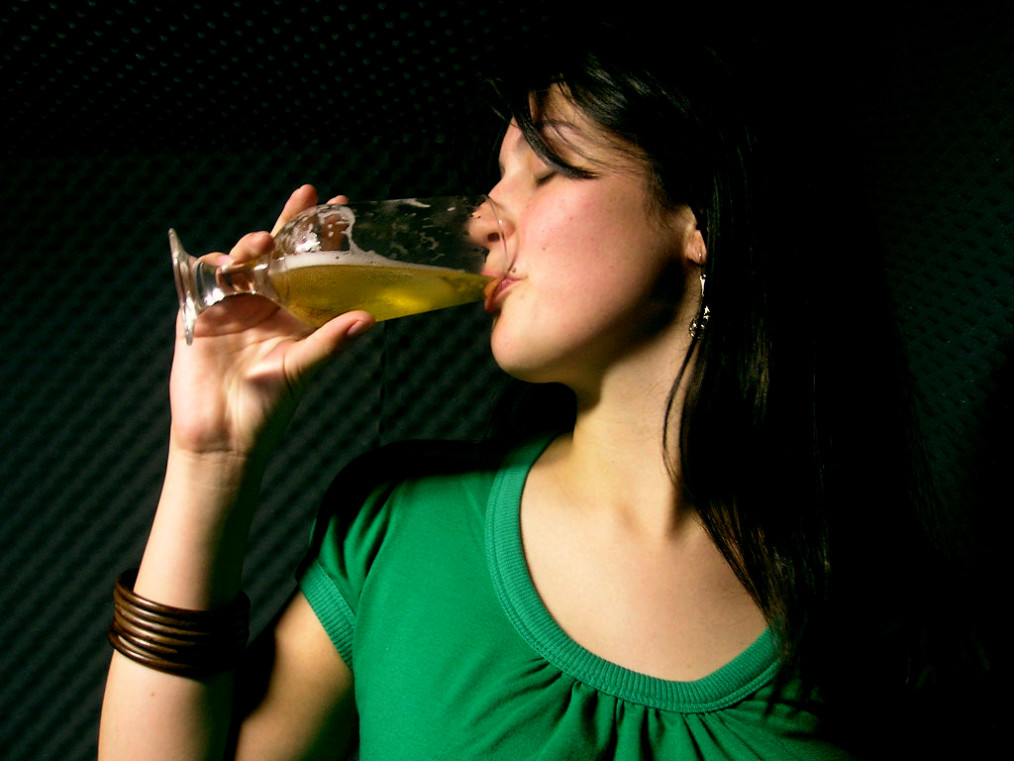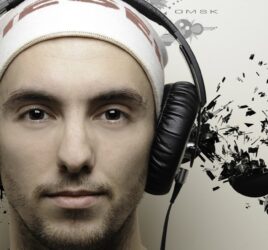
How beer automatically attracts attention
and the relation with adolescent substance use
Why do some adolescents develop a problematic pattern of substance use or even a substance dependency, while others who use just as much alcohol, cannabis, or other drugs grow into a ‘typical’ adult life with a partner, a house, a job, kids, and a pet? I spent more and more time pondering this question during the six years I worked with substance-using adolescents as a youth worker. Luckily, I had the opportunity to start a PhD project looking for the answer to this question.
“Why do [only] some adolescents develop a problematic pattern of substance use or even a substance dependency?”
The starting point of the project was the dual-process theory of addiction, which states that addiction develops due to an imbalance between two classes of processes. The first class includes the automatic, appetitive, impulsive processes, which are thought to become stronger by repeated substance use. In the second class are the cognitive, deliberate, rational processes, which are said to become weaker by repeated substance use. I focused on automatic attentional processes and cognitive control processes. Cognitive control is the ability to consciously control your behavior. Automatic attention is the (very normal) phenomenon that your attention is automatically and unintentionally drawn towards information that corresponds to important things in your life.
For example, if you are looking for a new apartment, then your attention is drawn towards every ‘for rent’ sign you pass by; if you are on a diet, then your attention is drawn towards everyone eating a muffin or fries. This can be helpful (like the ‘for rent’ signs) or not (like the muffins and fries). In the food example, automatic attention can make it hard to stick to your diet and ignore the unhealthy stuff. Similarly, automatic attention can make it hard for substance abusers to ignore information related to ‘their’ substance, thereby making it hard to stay away from the substance. Indeed, research has shown that the strength of this automatic attention is associated with greater severity of addiction (Fadardi & Cox, 2006; Noël et al., 2006), poorer treatment outcomes (Carpenter et al., 2006), and increased relapse (Cox et al., 2002, 2007; Marissen et al., 2006).
“automatic attention can make it hard for substance abusers to ignore information related to ‘their’ substance, thereby making it hard to stay away from the substance”
My PhD research investigated whether young substance users are characterized by a relatively strong automatic attention towards general rewarding information and substance-related information. To measure automatic attention, study participants performed a computer task in which they were asked to react to a target in the screen (i.e., a little grey block) which was preceded by cues (i.e., an arrow pointing towards possible gain of points) that might or might not attract the attention. The results showed that adolescents who used more alcohol, cannabis, and tobacco showed a stronger automatic preference for information that predicted a high chance to gain points. Moreover, the automatic attention to the rewarding information predicted substance use three years later (Van Hemel-Ruiter et al., 2013, 2015b).
In a subsequent study I used a separate computer task to measure automatic attention for alcohol pictures in alcohol-using adolescents (Van Hemel-Ruiter et al., 2015a). This showed that adolescents with more alcohol use automatically attend more to pictures of alcoholic drinks, relative to their peers who reported less alcohol use. Moreover, the association between automatic attention and alcohol use was especially strong in adolescents who demonstrated less cognitive control on a third computer task.
“the finding that automatic attention for substance information was related to dependency and not decreased by regular treatment points to automatic attention as a target for a novel intervention”
Finally, I had the possibility to recruit a group of substance-dependent adolescent patients at the addiction care facility, Verslavingszorg Noord Nederland (VNN). We assessed automatic attention for ‘their’ substance (i.e., alcohol, cannabis, GHB, or amphetamine) before their treatment and six months after the start of treatment. Before treatment, the patients demonstrated a strong automatic attentional bias for substance pictures that was related to the strength of their substance dependency. Unfortunately, it was hard to keep the participants in the study. Nevertheless, we were able to show that there were no significant decreases in dependency, substance use, and automatic attention during the six-month follow-up period, and no increase in cognitive control. This underscores the persistent character of addiction. Moreover, the finding that automatic attention for substance information was related to dependency and not decreased by regular treatment points to automatic attention as a target for a novel intervention. The great news is that from March 2016 we will start a new study at VNN, examining the effects of an attention retraining intervention in another group of substance-dependent patients.
References
Fadardi, J.S., & Cox, W.M. (2006). Alcohol attentional bias: drinking salience or cognitive impairment? Psychopharmacology 185(2), 169-178.
Carpenter, K. M., Schreiber, E., Church, S., & McDowell, D. (2006). Drug stroop performance: Relationships with primary substance of use and treatment outcome in a drug-dependent outpatient sample. Addictive Behaviors, 31(1), 174-181.
Cox, W. M., Hogan, L. M., Kristian, M. R., & Race, J. H. (2002). Alcohol attentional bias as a predictor of alcohol abusers’ treatment outcome. Drug and Alcohol Dependence, 68(3), 237-243.
Cox, W. M., Pothos, E. M., & Hosier, S. G. (2007). Cognitive-motivational predictors of excessive drinkers’ success in changing. Psychopharmacology, 192(4), 499-510.
Marissen, M. A. E., Franken, I. H. A., Waters, A. J., Blanken, P., van, d. B., & Hendriks, V. M. (2006). Attentional bias predicts heroin relapse following treatment. Addiction, 101(9), 1306-1312.
Noël, X., Colmant, M., Van, D. L., Bechara, A., Bullens, Q., Hanak, C., et al. (2006). Time course of attention for alcohol cues in abstinent alcoholic patients: The role of initial orienting. Alcoholism: Clinical and Experimental Research, 30(11), 1871-1877.
Van Hemel-Ruiter, M. E., de Jong, P. J., Oldehinkel, A. J., & Ostafin, B. D. (2013). Reward-related attentional biases and adolescent substance use: The TRAILS study. Psychology of Addictive Behaviors, 27, 142-150.
Van Hemel-Ruiter, M. E., de Jong, P. J., Ostafin, B. D., & Oldehinkel, A. J. (2015b). Reward-Related Attentional Bias and Adolescent Substance Use: A Prognostic Relationship? PLoS ONE 10(3): e0121058.
Van Hemel-Ruiter, M. E., de Jong, P. J., Ostafin, B. D., & Wiers, R. W. (2015a). Reward sensitivity, attentional bias, and executive control in early adolescent alcohol use. Addictive Behaviors, 40, 84-90.
Van Hemel-Ruiter, M. E., Wiers, R.W., Brook, F. G., & de Jong, P. J. (in press) Attentional bias and executive control in treatment-seeking substance-dependent adolescents: a cross-sectional and follow-up study.
Note: Image by Tainara Mahyna, licenced by CC BY 2.0.



